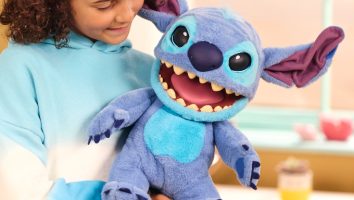Jeanette Steemers is very smart. I have heard her speak at a number of children’s television events over the years and I am always impressed by her ability to distill our complex industry down into clear, honest and elemental truths.
While researching her upcoming book, Jeanette has spent quite a bit of time at Little Airplane’s offices, both in New York and London, observing how we research test our scripts with preschoolers prior to going into production.
During this time I have gotten to know Jeanette and I believe she is quite unique among academics. She approaches her research with the rigor of a scientist and the sensitivity of an artist. And, more importantly, she communicates in a way that all of us can understand.
This week Jeanette has graciously agreed to allow me to publish one of her lectures on the state of licensing in the British kids’ TV business. Below is Part 1 of an abridged version of the Inaugural Lecture that she gave at the University of Westminster on December 10, 2008.
Toyetic and Fun: Are pre-school television shows just “giant toy ads?”
by Professor Jeanette Steemers, Ph.D.
Licensing and merchandising considerations have always been around, but have become much more prevalent in defining the shape and development of British pre-school television in recent years – particularly in the light of the substantial financial pressures affecting the whole children’s production sector – not just pre-school.
Clearly licensed characters are a very large business indeed with the pre-school licensing market in the UK alone estimated recently to be worth £800m at retail.
Indeed without licensing revenues some of the most expensive and creatively ambitious British pre-school shows could not be financed, because broadcast commissions only cover a very small proportion of the budget, often not more than a quarter.
But is it true that pre-school shows have become simply ads for toys?
That sort of suggests that British pre-school programming is made entirely in pursuit of commercial goals, that it’s unencumbered by considerations about the audience’s developmental or educational needs, let alone whether children might actually enjoy those programmes.
Clearly the pressures to generate merchandise retail sales for some shows are intense, but the statement is not true of all shows.
In our research with British programme-makers we set out to establish the following:
- How do different programme-makers deal with considerations related to licensed merchandise?
- To what extent are programmes shaped and influenced by these considerations?
These questions seemed very apt given British regulator Ofcom’s 2007 assessment of the UK pre-school market in its comprehensive overview of the provision of British children’s TV as a whole. Ofcom concluded that pre-school was probably one of the least endangered sectors of children’s programming precisely because of its ability to secure funding and commercial returns from DVDs and consumer products. However, there was also a suggestion that reliance on ancillary revenues and overseas sales might affect “the future range and volume” of what was produced in the UK and it reported industry evidence that these revenues “tended to be a myth, with big hits like Bob the Builder or Teletubbies happening only once in a generation.”
So what exactly do licensing executives want in respect of pre-school properties?
First there is no recipe for licensing success in the pre-school market, but most of the licensing executives we talked to pointed to a core set of requirements. They prefer:
- Costumed characters and animation over live action.
- 3D animation over 2D because it’s more toyetic.
- Teams of characters to generate collectability. Vehicular (tractors, racing cars, building vehicles, trains, etc.) and vocational characters (postmen, builders, firemen, racing drivers) are especially popular.
- Detailed backgrounds and worlds (for play sets).
- Props (vehicles, pets, accessories).
- Distinctive non-generic characters that stand out in the marketplace.
- Sufficient episodes to generate awareness and sustain longevity.
- Broadcast exposure on a major outlet (CBeebies, Five, Nick Junior) to secure retail interest.
- Classic properties which have resonance with parents.
- Online applications to extend and sustain the brand.
Next week, in Part two, Professor Steemers will explore how licensing considerations impact programming in the UK.
Professor Steemers’ research was funded by the Arts and Humanities Research Council (AHRC). She is currently writing a book on pre-school television production which will be published by Palgrave Macmillan later this year.
Jeanette held a conference called, “Making Television for Young Children” on September 12, 2008. To access the presentations visit: http://www.wmin.ac.uk/mad/page-1854
What do you think? Are preschool television shows just “giant toy ads?”























